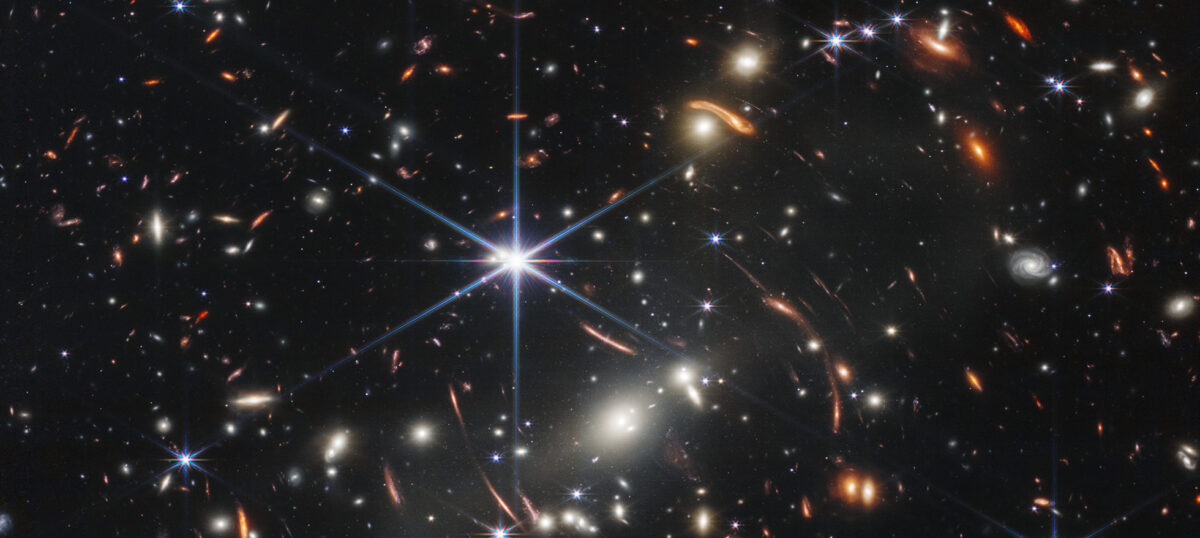Today, NASA unveiled images from the James Webb Space Telescope. The infrared images show the deepest and sharpest view of the distant universe to date. These glimpses into space represent 120 hours of observation and come after the telescope began capturing data a few weeks ago. Now available to the public, the Webb images invite people to explore distant galaxies and learn more about this scientific achievement.
“It’s an emotional moment when you see nature suddenly releasing some of its secrets,” Thomas Zurbuchen, associate administrator for NASA’s Science Mission Directorate, said at a news conference on Wednesday. “With this telescope, it’s really hard not to break records.”

Meet Webb’s First Deep Field, the first James Webb Space Telescope image. The incredibly detailed capture shows galaxy cluster SMACS 0723. To generate this view, Webb’s Near-Infrared Camera (NIRCam) composited several images at various wavelengths. This technology allows the world to see SMACS 0723 as it appeared 4.6 billion years ago.
“Webb can see backwards in time just after the big bang by looking for galaxies that are so far away, the light has taken many billions of years to get from those galaxies to ourselves,” Jonathan Gardner, NASA’s Webb deputy senior project scientist, said during the recent news conference.
Curious to see just how much NASA’s technology has improved? Compare the James Webb Space Telescope images to those captured by the Hubble Space Telescope. Twitter user @Johnnyc1423 created a helpful slider tool that compares images from the two telescopes. Currently, the tool features images of SMACS 0723, Southern Ring Nebula, Stephan’s Quintet, and Carina Nebula.
The new images represent a significant moment in scientific discovery and come after many years of collaboration. As NASA explains, “Thousands of scientists, engineers, and technicians from 14 countries, 29 U.S. states, and Washington, D.C. contributed to build, test, and integrate Webb.”
See a gallery of the images here, and stay updated as NASA releases further information.
